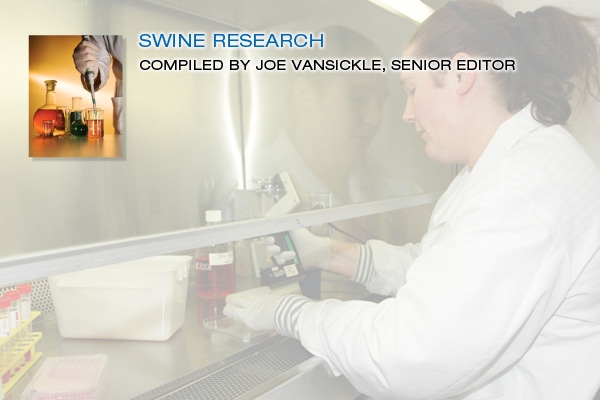The use of dried whey and spray-dried plasma has been widely adopted in the swine industry. These products contain immunoglobulins (antibodies) and other physiologically active components.Eggs, rich in high-quality protein and fat, also contain immunoglobulins and other active components that may be useful in nursery diets.
March 7, 2013

The use of dried whey and spray-dried plasma has been widely adopted in the swine industry. These products contain immunoglobulins (antibodies) and other physiologically active components.
Eggs, rich in high-quality protein and fat, also contain immunoglobulins and other active components that may be useful in nursery diets.
Like what you're reading? Subscribe to the National Hog Farmer Weekly Preview newsletter and get the latest news delivered right to your inbox every Monday!
Researchers conducted four experiments. The first two trials were conducted at the Purdue University Swine Research Farm and tested the effects of adding 5% spray-dried egg (SDE) to the diet in partial replacement of soybean meal during the first 10 days postweaning. The SDE improved growth performance in both experiments, indicating it is an effective nutrient source.
The third experiment was conducted with 1,008 weaned pigs on a commercial farm specially fitted for research. The SDE was added to the diet at a level of 6% initially, then reduced to 4% and 2% in subsequent diet phases, largely replacing poultry byproduct meal and soy protein concentrate.
The SDE was fed for four weeks and measurements were continued for two more weeks.
While it was fed, the SDE had virtually no effect on growth performance, but its use increased growth rate during the subsequent period.
More importantly, feeding SDE reduced the number of antibiotic treatments required, especially during the first week postweaning. There were 1.35% of the pigs treated each day during the first week on the diet without SDE, which was reduced to 0.75% of the pigs treated when feeding SDE.
For the six-week experiment, 1.01% of the pigs not fed SDE were treated with antibiotics, but only 0.84% of the pigs fed SDE required treatment. Treated pigs were healthier, but the addition of SDE did not affect frequency of mortality or removal.
A final experiment was conducted at the University of Illinois Swine Research Center to further test the nutritional value of SDE. Weaned-pig diets containing SDE, spray-dried plasma or both were compared to control diets. Over time, the use levels of both products declined from 6% to 2%. These products replaced mostly poultry byproduct meal and soy protein concentrate.
As expected, feeding plasma increased growth rate sharply during the first week. Feeding SDE did not change growth rate, confirming that it is an efficacious nutrient source. However, feeding SDE did slightly reduce feed efficiency, suggesting its energy value is somewhat lower than had been assumed (5,000 kcal/ME/kg).
Researchers: M. Song, Chungnam National University, South Korea; T.M. Che, Nong Lam University, South Vietnam; Y. Liu, J.A. Soares and James Pettigrew, University of Illinois; and B.G. Harmon, Railsplitter Feed Technology in Wildwood, MO. For more information, contact Pettigrew by phone (217) 244-6927 or e-mail [email protected].
You May Also Like


